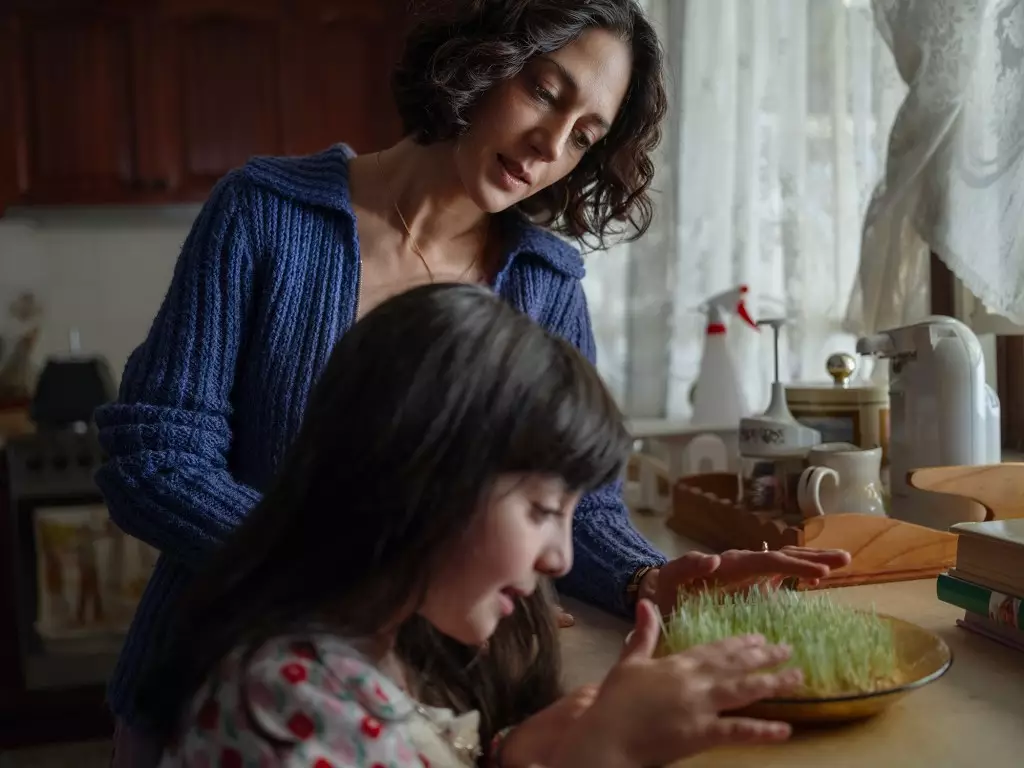Noora Niasari’s debut film, Shayda, presents a captivating narrative that reflects the struggles faced by a generation caught between tradition and modernity. With a focus on the protagonist, Shayda, the film offers a thought-provoking exploration of her experiences as an Iranian divorcée seeking refuge from her abusive ex-husband. The film unfolds with a powerful and vulnerable performance by Zar Amir Ebrahimi, who portrays Shayda’s immense strength in the face of adversity. Shayda’s primary concern revolves around the safety of her daughter, Mona (played by Selina Zahednia), as she grapples with the possibility of her ex-husband attempting to smuggle Mona back to Iran.
The film establishes a sense of fear and tension from its opening sequence set in 1995. Shayda and Vi, a social worker portrayed by Jillian Nguyen, carefully navigate an airport, accompanied by Mona, as they impart important instructions to her in case she finds herself there against her will. The recurring message emphasized by both women is the association of blue uniforms with safety. This introductory scene effectively conveys the anxiety Shayda experiences as she tries to protect her child.
The film gradually unravels the story of how Shayda finds herself seeking refuge in a shared hostel, concealed within a suburban enclave. A peek into Shayda’s photo album reveals that she graduated in 1984 and got married the following year. Her decision to move to Australia in 1991 appears to mark the beginning of the disintegration of her marriage. Building upon the cultural significance of divorce in Iranian society, the film highlights the challenges Shayda faces. These challenges extend even to her own mother, who questions her decision, implying that no one’s life is perfect and emphasizing the positive aspects of her ex-husband’s role as a father.
What sets Niasari’s film apart is its departure from the common narrative of women seeking refuge in secularism. Shayda takes pride in her Persian heritage, and the narrative unfolds against the backdrop of Nowruz, the Iranian New Year. Shayda actively engages her daughter in learning the Iranian language, and she even comforts another woman at the shelter with soothing scripture when her son goes missing. The film emphasizes Shayda’s dedication to preserving her cultural identity, and her struggle does not diminish her belief in the value of tradition.
The introduction of Hossein, Shayda’s ex-husband played by Osamah Sami, is somewhat anticlimactic. After the judge grants him temporary access to his daughter, he takes her out for a fast-food lunch without supervision. As Shayda anxiously awaits their return, Hossein’s lackadaisical attitude and passive-aggressive remarks reveal his condescending nature. A children’s book he shows Mona, focusing solely on a father and daughter relationship, exacerbates this condescension. The clash of cultures becomes apparent as Hossein ridicules Shayda, accusing her of becoming a westernized woman, despite Australia not aligning geographically with the West. Shayda’s personal style, featuring thrift-shop fashion, further challenges the notion of a simplistic cultural binary.
Hossein’s disdain for independent thinking drives the conflict between him and Shayda. He views any form of rebellion or personal growth as a threat, warning her that changing her appearance does not change her true nature. In his eyes, Shayda remains his property, reinforcing the patriarchal attitudes prevalent in Iranian society. The film delves into the complexities of cultural clashes and shines a light on the oppressive constructs that women like Shayda face daily.
As the narrative progresses, tensions escalate with the introduction of incriminating photos taken by Hossein to prove Shayda’s supposed infidelity. In their home country, such evidence could have dire consequences. The film becomes more intense, aligning the theme of psychological violence with immediate and real danger. Niasari skilfully captures the essence of domestic abuse by subtly portraying the shattered lives of the women passing through the shelter. Their resilience is illustrated through the character of Vi, who quietly supports these women in their journey towards healing.
Despite the film’s exploration of domestic abuse and its repercussions, it also offers a glimmer of hope. Through Mona’s resourcefulness and thoughtfulness, the film highlights the potential for renewal and growth. Niasari reminds viewers that amidst adversity, a sense of resilience can emerge. The passing of time is symbolized by a bowl of sprouting lentils, a reminder of life’s ability to persevere even in challenging circumstances.
Noora Niasari’s Shayda provides a deeply personal and critical exploration of the struggles faced by women torn between tradition and modernity. Through its captivating storytelling and powerful performances, the film highlights the importance of preserving cultural heritage while challenging oppressive patriarchal norms. Shayda stands as a testament to the resilience of individuals in the face of adversity and offers a glimmer of hope for a better future.


Leave a Reply